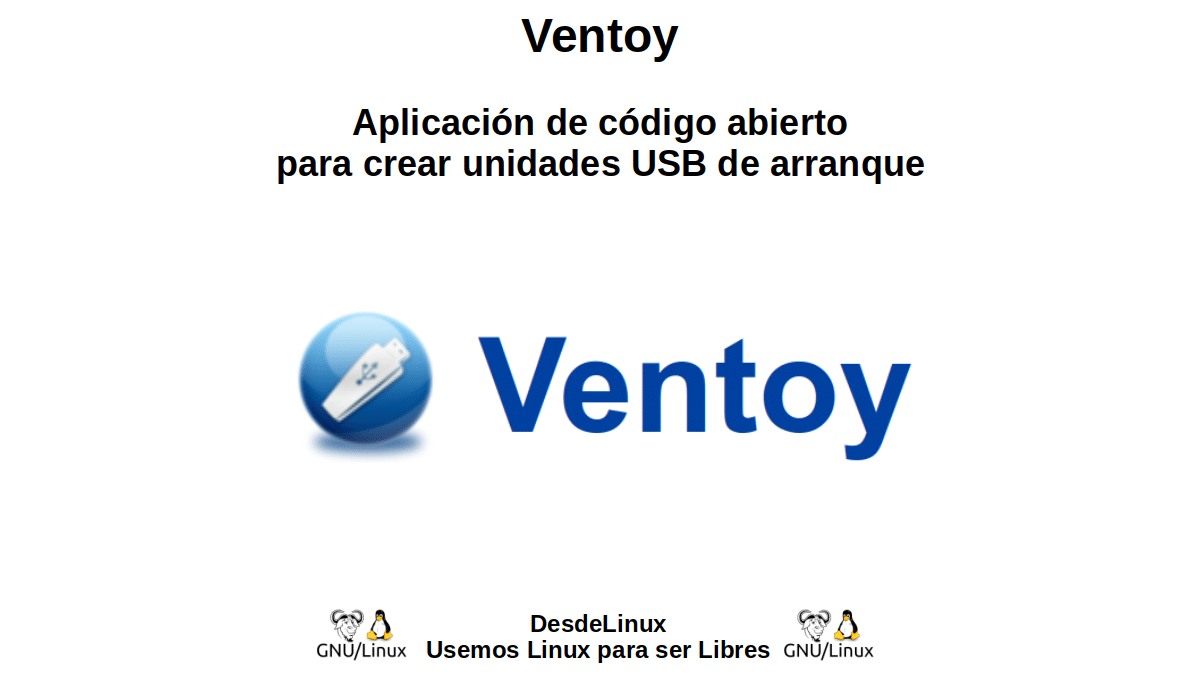
Ventoy: Open source application for creating bootable USB drives
Few days ago our partner Linux PostInstall hopen it here on the blog about Ventoy which is an open source tool for creating bootable USB drive for ISO / WIM / IMG / VHD (x) / EFI files. With ventoy, you don't need to format the disk over and over again, you just need to copy the ISO / WIM / IMG / VHD (x) / EFI files to the USB drive and boot them directly
And now, in more recent news we are pleased to announce that recently announced the release of the new version of Ventoy 1.0.62 to create bootable USB devices with multiple operating systems.
The program stands out because it provides the ability to boot the operating system from ISO, WIM, IMG, VHD and EFI images without changes, no need to unpack the image or reformat the media. For example, simply copy the set of isoimages of interest to a USB flash drive with the bootloader and Ventoy will provide the ability to boot internal operating systems.
Anytime, you can replace or add new ISO images simply by copying new files, This is convenient for testing and preliminary familiarization with various distributions and operating systems. The project code is written in C and is distributed under the GPLv3 license.
Ventoy supports booting on systems with BIOS, IA32 UEFI, x86_64 UEFI, ARM64 UEFI, UEFI Secure Boot, and MIPS64EL UEFI with MBR or GPT partition tables. Supports loading of various types of Windows, WinPE, Linux, BSD, ChromeOS, as well as Vmware and Xen virtual machine images. The developers have tested more than 770 iso images with Ventoy, including various versions of Windows and Windows Server, several hundred Linux distributions (90% of the distributions featured on distrowatch.com are stated to be tested), more than a dozen BSD systems (FreeBSD, DragonFly BSD, pfSense, FreeNAS, etc.).
In addition to USB media, the bootloader Ventoy can be installed on local drives, SSD, NVMe, SD cards, and other types of drives that use FAT32, exFAT, NTFS, UDF, XFS, or Ext2 / 3/4 file systems. There is an automated installation mode of the operating system in a file on portable media with the ability to add your own files to the created environment (for example, to create images with Windows or Linux distributions that do not support Live mode).
Main news of Ventoy 1.0.62
This new version of Ventoy 1.0.62 stands out for the VentoyPlugson GUI implementation to configure plugins as as such it provides many powerful functions and with the implementation of a GUI the usage is further enhanced.
Another change that stands out in the new version is in the plugin to change layout offers default_file setting to define the default theme.
In addition, it is also highlighted that a new section has been added to the start menu «Tools F5» to switch between topics.
The FreeBSD boot optimization, as well as for Ventoy2Disk.sh
The abnormal state of the volume was automatically fixed when performing a non-destructive installation on Windows and updated files with translations were also included.
Finally, if you are interested in knowing more about it, you can check the details In the following link.
Download and install Ventoy
For those who are interested in being able to try this tool, they can obtain the latest version from the following link
For the practical case of this publication, we will download the mentioned version by opening a terminal and typing the following in it:
wget https://github.com/ventoy/Ventoy/releases/download/v1.0.62/ventoy-1.0.62-linux.tar.gz
Once the download is done, we are going to proceed to decompress the package obtained and we are going to execute the file that is inside it.
Here we have two options to work with Ventoy, one of them is opening the GUI (GTK / QT), which we can execute from the terminal by typing the following:
./VentoyGUI.x86_64
Another option to work with Ventoy is with the WebUI (from the browser) and for this, from the terminal we are going to type the following command:
sudo sh VentoyWeb.sh
And later we are going to open the browser and go to the following URL
http://127.0.0.1:24680